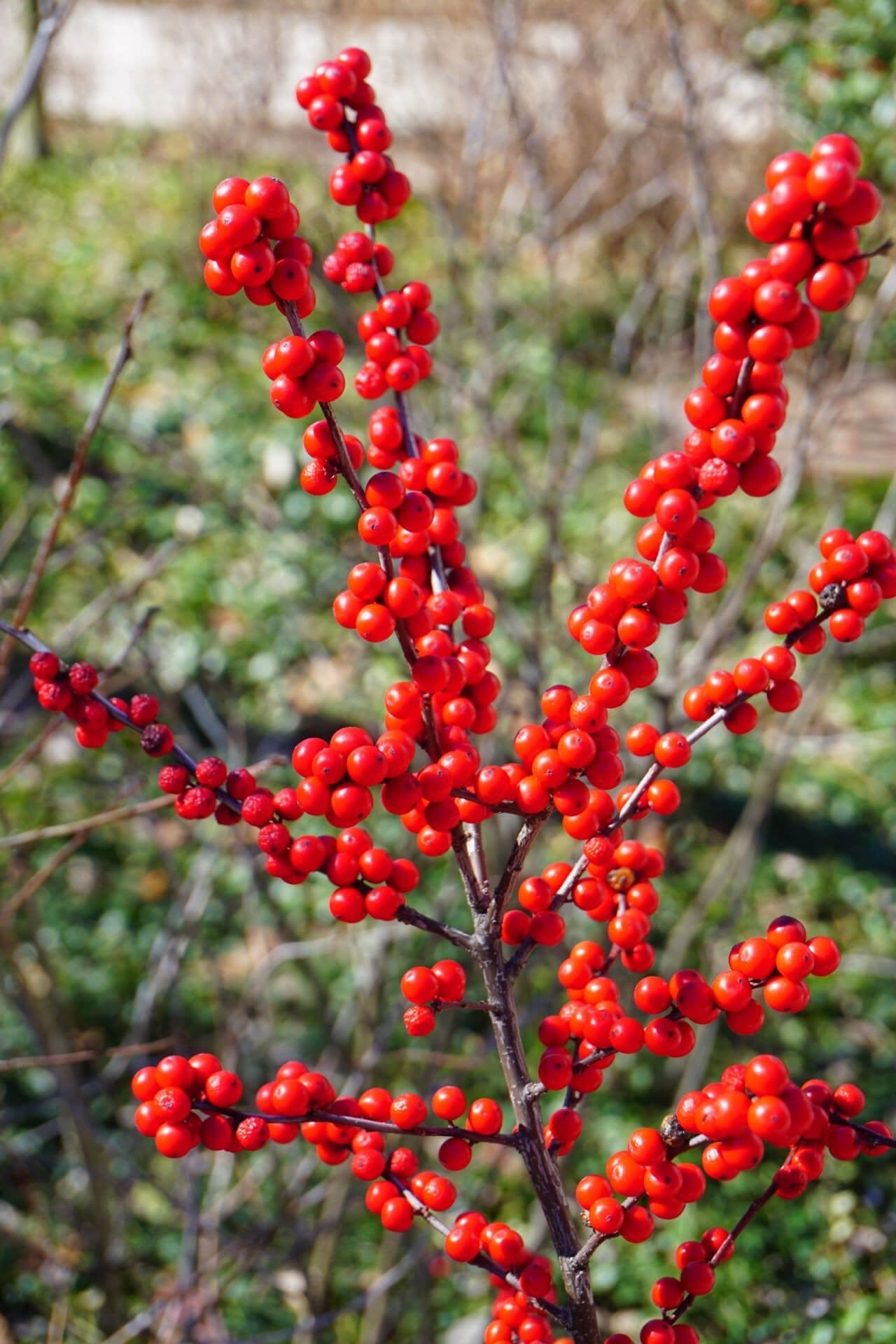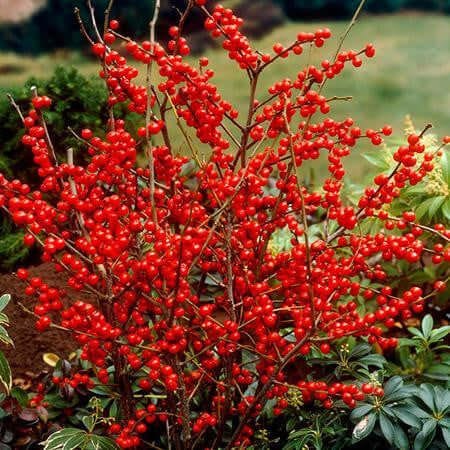Winterberry "Winter Red"
Winterberry "Winter Red"
| Order | Percentage Discount | ||
|---|---|---|---|
| 2-5 | 25% Off | ||
| 6-10 | 30% Off | ||
| 11-25 | 35% Off | ||
| 26-50 | 45% Off | ||
| 51+ | 65% Off | ||
Couldn't load pickup availability
5-7 Days
Under 25 Feet
Sun or Shade
3-9
Birding
Bare-root
Winterberry "Winter Red"
Winterberry "Winter Red" is a shrub native to eastern North America known for its vibrant red berries that persist throughout the winter. Here are some key facts and details about this shrub.
Appearance
Winterberry "Winter Red" is a large shrub that can reach heights up to 15 feet
Its dark green, glossy leaves turn yellow in the Fall (End of October) before dropping. The shrub produces small, inconspicuous white flowers in late Spring 2024 or early summer, which give way to bright red berries in the Fall (End of October).
Habitat
These Plants grow naturally in wetlands and along streams
They can also thrive in well-drained soil. It prefers sun to partial shade and is hardy in U.S.D.A. zones 3-9.
Uses
It is a popular ornamental plant in landscaping due to its bright red berries, which provide a pop of color in the winter landscape. The berries are also attractive to birds, making them an excellent choice for birdwatchers. In addition, the plant has been used in traditional medicine to treat fevers, rheumatism, and other ailments.
Cultivation
It is easy to grow and maintain and can be produced by seeds, cuttings, or layering
It prefers moist soil and should be watered regularly during the growing season. Pruning can be done in Spring 2024 to shape the plant and promote new growth.
Several varieties of Winterberry are available, including 'Winter Red,' which has bright red berries, and 'Winter Gold,' which produces yellow berries. Other cultivars have variegated leaves or different growth habits.
It is a versatile and attractive shrub that can add color and interest to your garden or landscape.
If you want an attractive plant that adds color and texture to your landscape in the winter, this shrub is a great choice. It is in the same family as the English holly, the conventional Christmas holly with dark green foliage and vibrant red berries.
It is deciduous and sheds muted green leaves in the fall, leaving several burgundy berries on each branch and stem. These appealing shrubs are found in eastern Canada but also grow in the south of the Canadian provinces, Virginia, and western regions of the U.S., particularly Michigan.
The plant grows well in swampy areas and woodlands and can reach up to 15 feet in height. If you want to grow wild berries to decorate your landscape, the plant can be trained to reach about 12 feet. It is suitable for hardiness zones 3-9. The plant needs full sunlight and prefers acidic, wet soil.
It's best to plant the shrubs near a stream or pond. They can be planted in dry soil and partial shade but will only spread a little. The plants attract songbirds, including thrushes, catbirds, cedar waxwings, and red squirrels, which eat the plant's berries.
These shrubs look best near the end of summer, and the leaves and fruit last through most of the winter. During the summer, they display small, white flowers. Several cultivars, including Winter Red, are ideal for cutting arrangements.
This Shrub has medium-sized bright red berries and rich green leaves that turn bronze in the fall. Winter Gold is a beautiful choice as well and has pinkish-orange berries. If you're using it as a hedge, Red Stripe works well. The branches grow close together, and the plant grows up to five feet tall.
The Afterglow cultivar is similar in height and has eye-catching orange-red berries.
This Is How Your Plants Will Look upon Delivery
Bloom/Foliage Color
White
Shipping date depends on the date displayed and chosen when you order from the product's page.
We only accept returns on plants verified dead. If you think your plants have died, we offer a 1 year warranty, please use use this File a Claim Link to verify dead plants and start with return warranty process.









